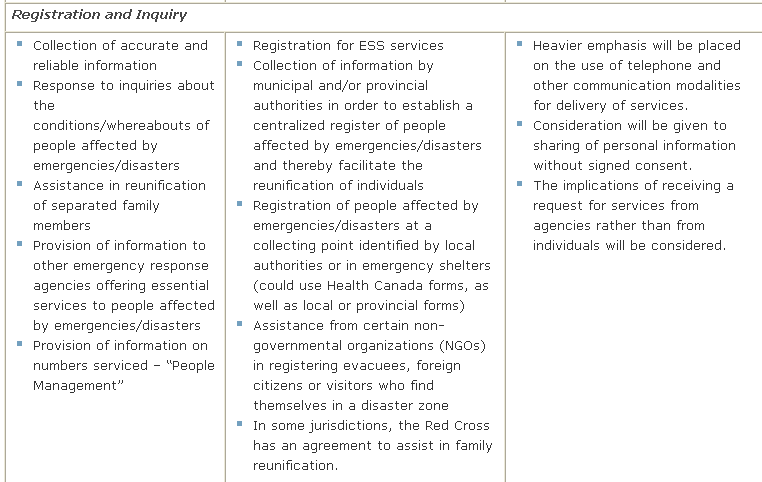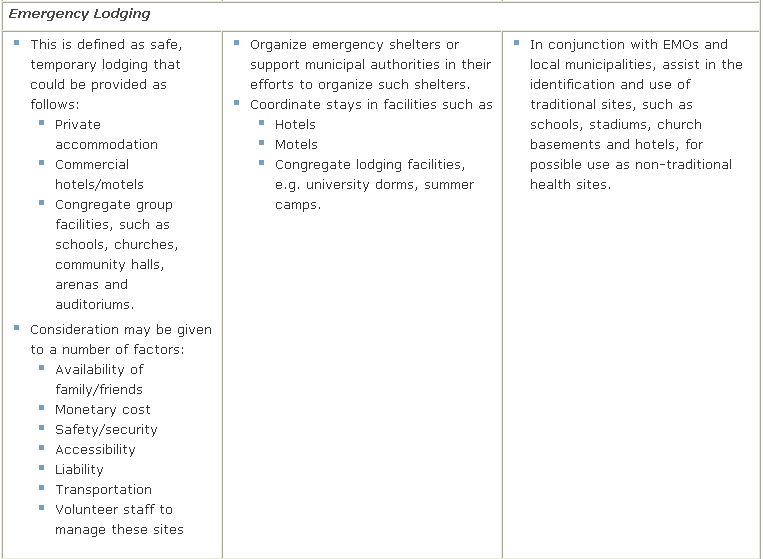Throughout history, pandemic diseases such as plague, typhoid, Cholera and Influenza have killed million of people and decimated millions of people. While is earlier times, the people were helpful and resorted to prayer and divine intervention to save them, modern medical medicines can control the illness very quickly. However, medicines alone will not be able to stop the disease from spreading and what is required is a pandemic preparedness plan that allows very prompt intervention to prevent diseases from spreading and protecting people. This paper briefly examines the 1918 Influenza epidemic and presents an influenza pandemic preparedness plan for World Vision, the Canadian NGO.
About the 1918 flu pandemic
Duncan (2003) has researched the story behind the Spanish Flu that swept across the world in 1918 and killed about 40 million people across the world. While her book relates her story of the trouble and the acrimony she faced when she attempted to exhume the bodies of seven coal miners who were buried in the snowy wasteland of Norway in Longyearbyen village of Spitsbergen, the book has mentioned in detail how the virus spread and killed millions of people. The author reports that the disease began spreading during the last days of World War I and quickly spread across the world as returning soldiers carried the diseases to France, Spain, UK, Greece and so on. There are graphic descriptions of people being buried alive and rising out of their coffins and stricken nations did not know what caused the virus, how it spread and so they could not control it and cure the ill. According to the author, the disease struck in three waves and the doctors could only ‘direct traffic’ as they directed the sick and dying to hospitals and cemeteries. The war had created an immense shortage of skilled staff, there was lack of funds and more important, there was lack of preparedness to handle the pandemic.
The lessons that the influenza pandemic taught the world has served well, governments, and health agencies across the world have initiated measures to prevent such infections spreading and killing people.
Influenza pandemic preparedness plan for world vision
World Vision – WV, is a non governmental organization that is based in Canada and it operates across the world, helping the Humanitarian Aid, Food Security, HIV/AIDS and TB, Nutrition and Health, Famine and natural disaster relief and man other operations, designed to help the poor and the needy. The organization has a number of volunteer and health care professionals who work among the sick and diseased. Consequently, employees would be exposed to any outbreaks of infectious diseases such as influenza. An influenza preparedness plan is given in this section (World Vision, 2008).
Mounier (2003) has reported about the actual influenza preparedness plan of 21 countries and reports that while general state of readiness is acceptable, there is less effort spent in integration of the plans between different countries and the author argues that since infectious diseases do not respect geographic boundaries, countries have to be more cooperative in developing joint plans. Gensheimer (2003) has estimated that if there is no influenza preparedness plan, in USA alone there would be about 60 million deaths and the author suggests that the outbreak could be due to natural causes or the activities of bio terrorists. Germann (2006) has suggested measures such as restriction on travel, vaccination of children and older people who are high-risk groups and sequestering individuals suspected of being infected, as viable components of the plans.
Preparing the Plan
The influenza preparedness plan for WV would cover three entities: organization, community or people who would be protected and employees would be involved in implementing the plan. There would also be some rules, regulations, laws, and compliances to be observed by World Vision and these laws would be drafted by government public health departments and enforced by police officers. In this paper, it is assumed the World Vision would be ready to accept any requests from the law and hence discussion about this aspect is omitted.
Challenges that World Vision would face
Some of the challenges that the NGO would face are in moving quickly to the outbreak area and deploying its resources for care and intervention. The NGO is not very financially sound and has to rely on donations and financial grants from the government and other institutions. In such a case, deployment of personnel and materials would be an issue and they would have to depend on other organizations for help, typically government. The government apparatus, even though it is willing would in all probability be tied up in in its work of rescue and help. Another challenge is setting up communication lines, obtaining power, telephone lines, setting up radio transmitters and other communication lines. They would have to coordinate with the command center that is set up by the government. In cases when the employees need to go to other countries, immediate visas and permission would have to be obtained.
Plan for the Organization
WV would be interacting with the government and its role is to assist in diagnosing people according to different levels of infection, providing care for the outpatient cases and providing in house care for the serious cases. The organization would need to address the following issues (PHAC, September 2008):
World Vision would need to arrange to gather medicines, vaccines and other medical equipment and supplies so that they are ready for dispatch. WV is not a manufacturer of medicines and has limited funding, so it cannot buy medicines on its own but has to procure them from government and public health agencies. WV needs to gather the employees and volunteers who would be implementing the plan. Volunteers include trained healthcare professionals and general public who would help in receiving the patients, directing them, taking their details and so on. Employees would have to be provided with adequate protective clothing and suitably medicated and vaccinated. WV needs to move the employees to the outbreak areas and set up reception centers at strategic locations and install equipment and communication devices. There would be tents, shelters and public buildings can be requisitioned for shelters. Communication lines would have to be opened with government agencies and other NGOs and healthcare organizations that are involved. As and when patients start coming in, they would have to be registered, personal details taken and an assessment done for severity of infection. Serious cases would have to be routed into a sequestered shelter where expert healthcare professionals would take over. Less serious cases would have to be examined and required injections given. WV would also have to arrange for kitchen and catering services, food and emergency clothing and for sleeping, as per the season. Overall. World Vision should attempt to judge the extent of the infection and should pass on information such as number of cases, types and levels of infection and so on.
Appendix gives a number of tables giving details of the plan (PHAC. 2008).
Plan for Employees
Employees would include healthcare employees who are employees of World Vision and also volunteers. Employees would have to undergo the required training that would be provided over a period including instructions for the current emergency. Training will be offered as per the desired role and expertise of the employee. During the outbreak notification period, employees would have to report to the designated reporting place, collect the required protective clothing and take the required injections and medications, collect the required health kits and medical equipment and be ready for departure. They would then de dispatched to the designated operation centers and carry out the expected duties. Employees would be caring for humans in distress and also pets and livestock and must be ready for any eventualities such as carrying out euthanasia procedures on infected pets and livestock and disposing off the remains. They would need to maintain accurate records of what they observe and whom they treat (PHAC. 2008).
Plan for the Community
Community members include the permanent and drifting members in an area in which the outbreak has occurred. Community members must not panic and must report to the healthcare centers as and when announcements are made. They need to reveal private and personal information as and when requested and should be ready to accept any type of medical examination and medication including invasive medical examination. These procedures are meant to protect them from infections. They would have to provide the required information about family members and report on any unusual incidents that they have observed. If there are any travel restrictions, these have to be observed along with compliance of any rules and requests by healthcare workers. In addition, there are a number of other guidelines and procedures that are listed in the website of Public Health Agency of Canada (PHAC, September 2008)
Conclusion
The paper has discussed the Influenza pandemic preparedness plan for World Vision. A brief discussion of the 1918 influenza outbreak has been done to understand how lack of preparation led to the loss of about 40 million lives. The plan has been provided for World Vision, its employees and the community. Please refer to the Appendix section for a summary of the steps.
Apendix
A1. Summary of Planning for Pandemic Influenza in Canada
Given below is the summary of steps to be followed by the NGO.
A2. Implementation plans from PHAC
The following figures give details of the influenza pandemic planning in Canada. The information is accessed from Public Health Agency of Canada (PHAC, 2008).



References
- Duncan Kirsty E. 2003. Hunting the 1918 Flu: One Scientist’s Search for a Killer Virus. University of Toronto Press.
- Gensheimer Kathleen F, Meltzer Martin I. 2003. Influenza Pandemic Preparedness. Emerging Infectious Diseases Journal. Volume 9. Number 12. pp: 210-215.
- Germann Timothy C. Kadau Kai. 2006. Mitigation strategies for pandemic influenza in the United States. Proceedings of the National Academy of Sciences of USA. Volume 103. Issue 15. pp: 5935-5940.
- Mounier-Jack S, Coker R. 2003. How prepared is Europe for pandemic influenza? Analysis of national plans. The Lancet. Volume 367. Issue 9520. pp: 1405-1411.
- PHAC. 2008. Public Health Agency of Canada: The Role of Emergency Social Services in Planning for Pandemic Influenza in Canada.
- World Vision. 2008. International and Canadian Plans.